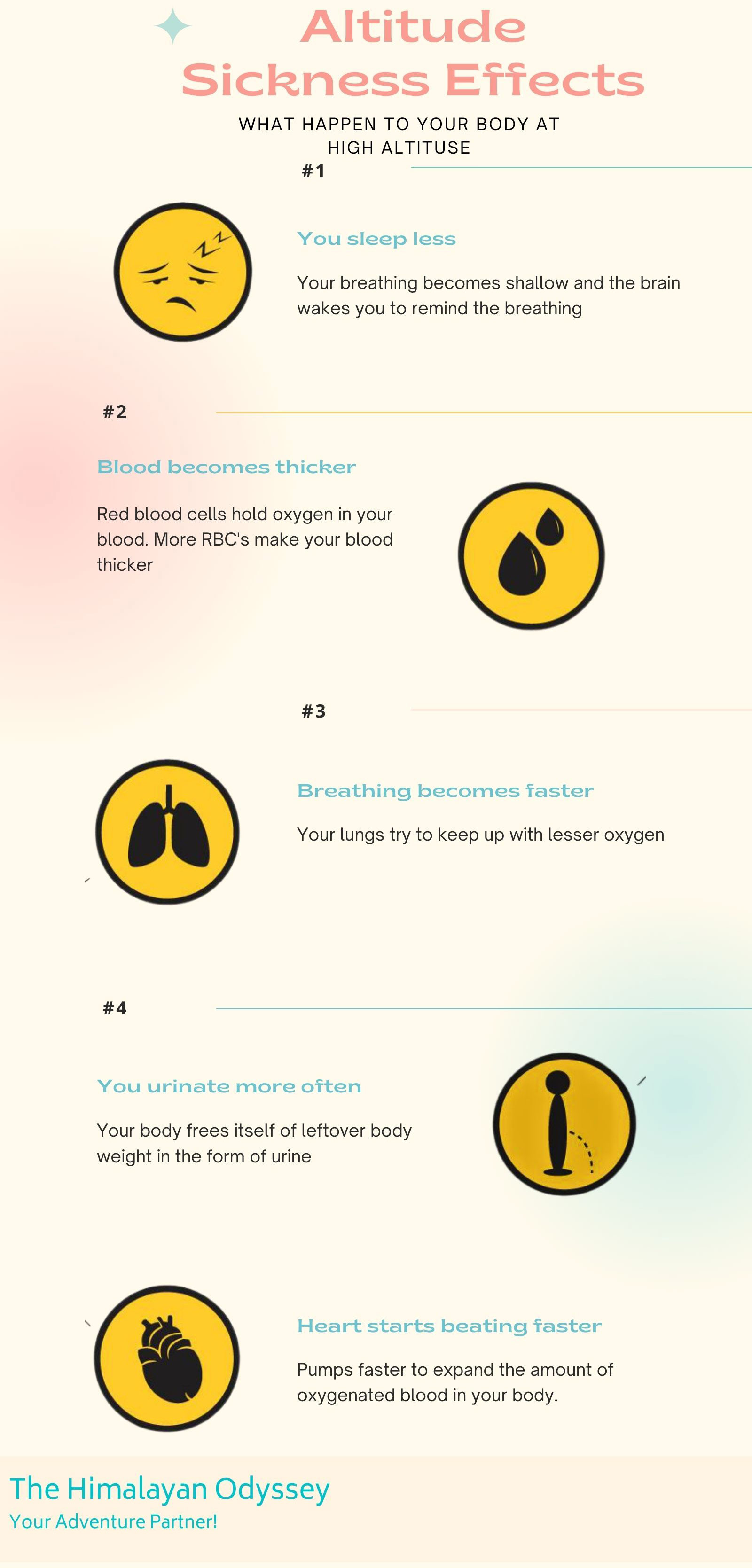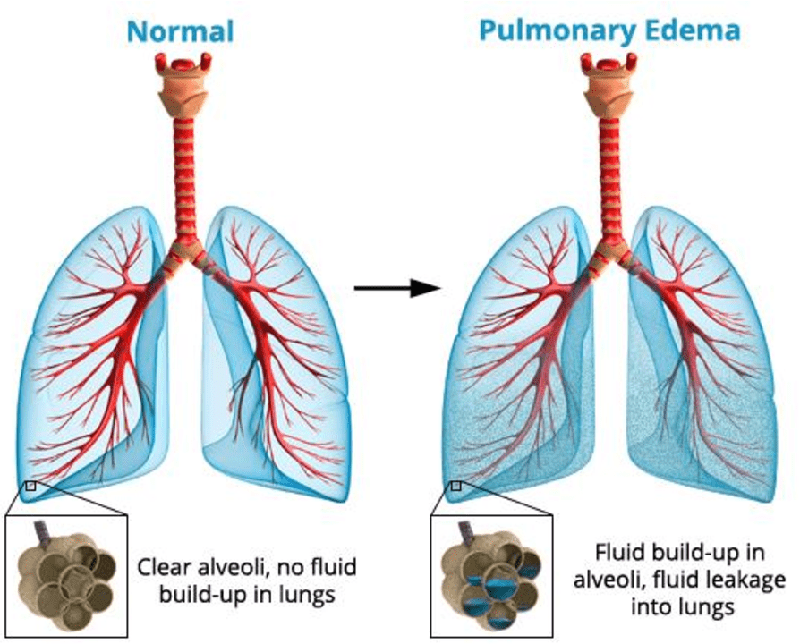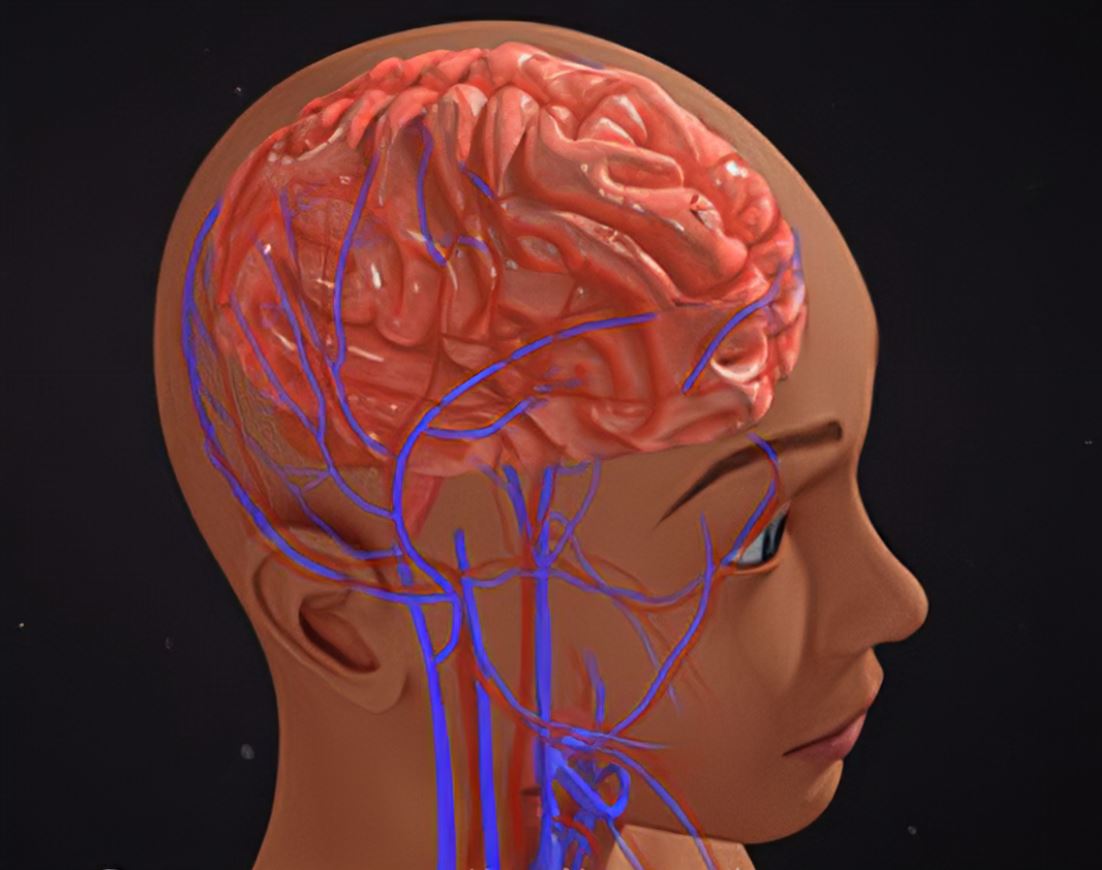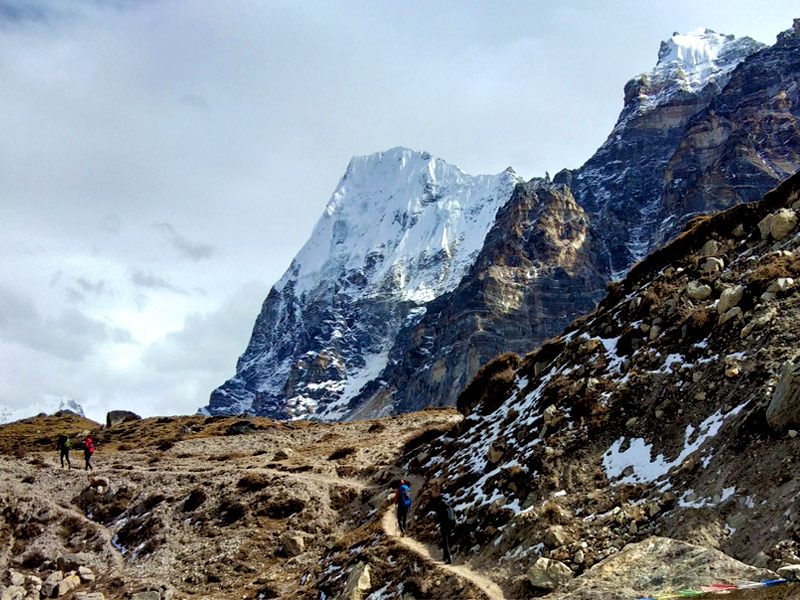What is Altitude Sickness?
Sometimes called “mountain sickness,” an altitude sickness is a symptom when you are in the high altitude mountains. You will start to get the symptoms when you walk fast in the high elevation without the rest. Altitude Sickness occurs when your body cannot get enough oxygen from the air to a higher altitude. This might start from the altitude range above 3,000m. In some cases, the body will acclimate to the surrounding, lowering the risk of altitude sickness. Trekkers can react to high altitudes in several ways.

Types of Altitude Sickness
Kalapatthar is the highest point and is also called the best viewpoint for Everest with an elevation of 5,545 m/18,192 ft. Oxygen level and atmospheric at this height may decrease by 50% than sea level. Due to this, trekkers doing Everest Base Camp Trek have the risk of getting altitude sickness. It is very important to have a general idea about altitude sickness and its types.
The probability of getting Everest Base Camp Trek altitude sickness depends upon the trekker’s body strength to adapt to such environments. Mainly, there are three types of altitude sickness listed below:
Acute Mountain Sickness (AMS)

Acute mountain sickness (AMS) is the most common altitude sickness. It occurs in roughly 40 to 50 percent of people who live at a low altitude and sleep at an altitude above 10,000 feet (3000 m). And about 25 percent of those sleep above 8000 feet (2400 m). Some people can develop AMS as low as 6500 feet (2000 m).
Symptoms normally occur within 6 to 12 hours of arrival at altitudes above 8000 feet (2400 m). Symptoms can begin as soon as one hour or as long as 24 hours after arriving. Vital nutrients, rehydration of the body, and proper rest is a suitable method of treatment for AMS.
Symptoms
- Lack of hunger, nausea, or vomiting
- Excessive Flatulation
- Tiredness, headache with or without dizziness or “pins and needles” sensation
- Swelling of hands, feet, and face
- Nose bleeding
- Shortness of breath
- Persistent rapid pulse
High Altitude Pulmonary Edema (HAPE)

High altitude pulmonary edema (HAPE) is a second stage with the potentially fatal state in which lung capillaries leak and liquid stores in the lungs. Those fluid-filled air sacs then cause difficulty in breathing. HAPE is unusual but can happen in people who quickly ascend. The rate of ascent, amount of physical activity at high altitude, and neglecting moderate symptoms of AMS may come up with HAPE.
Symptoms
- Shortness of breath at rest
- Cough
- Decreased exercise performance
- Chest tightness
- Crackles or wheezing while breathing
- Blue skin color
- Rapid breathing
- Rapid heart rate
High Altitude Cerebral Edema (HACE)

High Altitude Cerebral Edema (HACE) is a rare clinical condition that occurs as a result of traveling to high altitudes without acclimatization and also the severe form of acute mountain sickness (AMS). It is caused by leaky capillaries in the brain, which causes fluid collection and brain swelling. If not descend and treated in time, trekkers usually go to a coma, and then death can occur.
Symptoms
- Severe acute mountain sickness
- Confusion, Loss of consciousness
- Fever
- Ataxia
- Photophobia
- Rapid heartbeat
- Altered mental state
Cause of Altitude Sickness
If your body is not ready for high altitude, then you may experience altitude sickness. As you go higher, the air becomes thinner and less oxygen is saturated. You will start to get some symptoms at elevations above 8,000 feet. Some hikers may feel initial age of altitude sickness between 8,000 to 18,000 feet. But the majority of people experience elevations above 18,000 feet.
Preparing for Everest Base Camp Trek
If you will be sleeping at altitude altitudes, you should make an appointment with an expert healthcare provider. During this visit, you should consult your travel programs, availability of medical care at your destination, and the potential need for medicines to prevent altitude illnesses. Methods for reducing risk and treating altitude sickness are explained in detail below.
People with particular medical situations need to take proper precautions when traveling at high altitudes
- If you have diabetes and you check your blood sugar, be aware that blood glucose meters can give incorrect results at high altitudes. Consult the manufacturer for advice about high-altitude readings.
- If you have had angina or a heart attack in the past, check with your doctor to be assured that it is safe to travel. If you catch chest pain, shortness of inhalation, or dizziness while walking, seek medical help quickly.
- Asthma does not worsen at high altitudes, although cold-induced bronchospasm is a problem in low-temperature at high altitudes.
- If you use oxygen because of your lung conditions, you will need a higher oxygen flow speed at a high altitude. If you do not need oxygen for your lung disease at home, you might need oxygen at a high altitude.
- If you have sickle cell disease, you will probably need oxygen if you travel above 2500 m.
- If you have diseases like, COPD, cystic fibrosis, pneumonia, pulmonary hypertension or sleep apnea, you should check with your doctor.
- If you have high blood pressure, be conscious that going to high altitude could increase or sometimes lower your blood pressure.
- If you are pregnant, traveling is not risky for a normal pregnancy. If you have any difficulties with pregnancy, or if you are a smoker, talk with your doctor.

Everest Base Camp Trek Acclimatization
Acclimatization means the way of adjusting the individual organism to a change in its environment enabling it to maintain fitness across the range of environmental conditions. This is achieved by spending some time at higher altitudes. This helps the body to change to the decrease in oxygen molecules at a certain altitude. Acclimatization is the best way to prevent Everest Base Camp Trek altitude sickness by ascending to a higher point on the trail at a slow rate.
Everest Base Camp Trek has a diverse landscape with a lower 1,300 meters to higher 5,545 meters above sea level. So the acclimatization process is very important and should not be skipped. As you ascend higher, there will be fewer molecules of air exerting downward pressure. This means, the spaces in between molecules of air start to increase the higher you go up. One of these molecules is oxygen, each breath of air we take will have fewer molecules of oxygen, which is what people called thin air at a higher altitude.
How to Prevent Altitude Sickness on Everest Base Camp Trek?
Trekking to Everest Base Camp is a once-in-a-lifetime adventure, but the high altitude can pose serious risks if you're not prepared. At worst, you can even perish if you are not prepared enough. In fact, as of May 2024, the total number of deaths on Everest is estimated to be around 340. Among these fatalities on Everest, over 200 bodies still remain on this mountain. Although most of these fatalities occur after the first two base camps, there have been cases of deaths in Everest base camp caused by altitude sickness. Altitude sickness is one of the most common challenges faced by trekkers on this route, and it can affect anyone—regardless of age, fitness level, or trekking experience. Fortunately, with the right precautions, knowledge, and mindset, you can greatly reduce your chances of getting sick at high elevations. Below are some essential tips and practices to help you stay safe, healthy, and fully enjoy your journey to the base of the world’s highest peak.
Usually, medication is not given before time unless flying or driving to a high altitude is sure. There is some evidence that taking Diamox two days before a trek and during your trip can help counter altitude sickness. But you should take a prescription from your doctor to get it.
It is also important to know that you can still get altitude sickness even when taking Diamox. Once you start having signs, the medication will not reduce them. Getting yourself to lower altitude again is the single useful treatment.
Altitude sickness usually gets more serious at night when you are sleeping. It’s a great idea to do a higher climb during the day and then return to a lower altitude to sleep. During Everest Base Camp Trek, you may feel uneasy to sleep at a high point because you should spend overnight at a higher altitude.
Your body needs to adapt slowly to the new environment as you go higher on the way to Everest Base Camp. So, instead of walking fast during the trek, walk at your own pace and give time to acclimatize your body. Do not drive directly to the higher altitude while you are trekking.
When you are trekking to Everest Base Camp, plan your trip up with stop points at lower elevations before reaching your final destination. Try to trek no higher than 1000 feet each day and rest for every 3000 feet as you go higher.
Alcohol, cigarettes, and medications like sleeping pills can cause altitude sickness symptoms more serious. Do not consume drinks, smoke, or sleeping pills during your trek to a higher altitude like Pangpema.
Staying hydrated is also another essential part of preventing altitude sickness in the Everest Base Camp. Drink water frequently during your climb because the water you consume goes through sweat.
In general, it is not good for your body to consume more carbohydrates. But when you are at a high altitude, you need to eat extra calories. So carry lots of healthy snacks including many whole grains.
Climb at a pace that is convenient for you. Don’t try to go too fast or engage in exercise that is too difficult.
At Last
Everest Base Camp Trek altitude sickness might be a huge challenge for the trekkers who may not have enough knowledge. The risk of altitude sickness is always present. But with proper preparation, you can always prevent Everest Base Camp altitude sickness.
Trekking is a great way to challenge yourself and drive yourself beyond limits. Everest Base Camp Trek has also got all to offer an adventurous and lifetime memorable trip. Trekking in nature is a great way to enhance your physical and mental health. It can be quite an adventurous, exciting and exciting experience if proper care is taken and one is well prepared for future difficulties.







